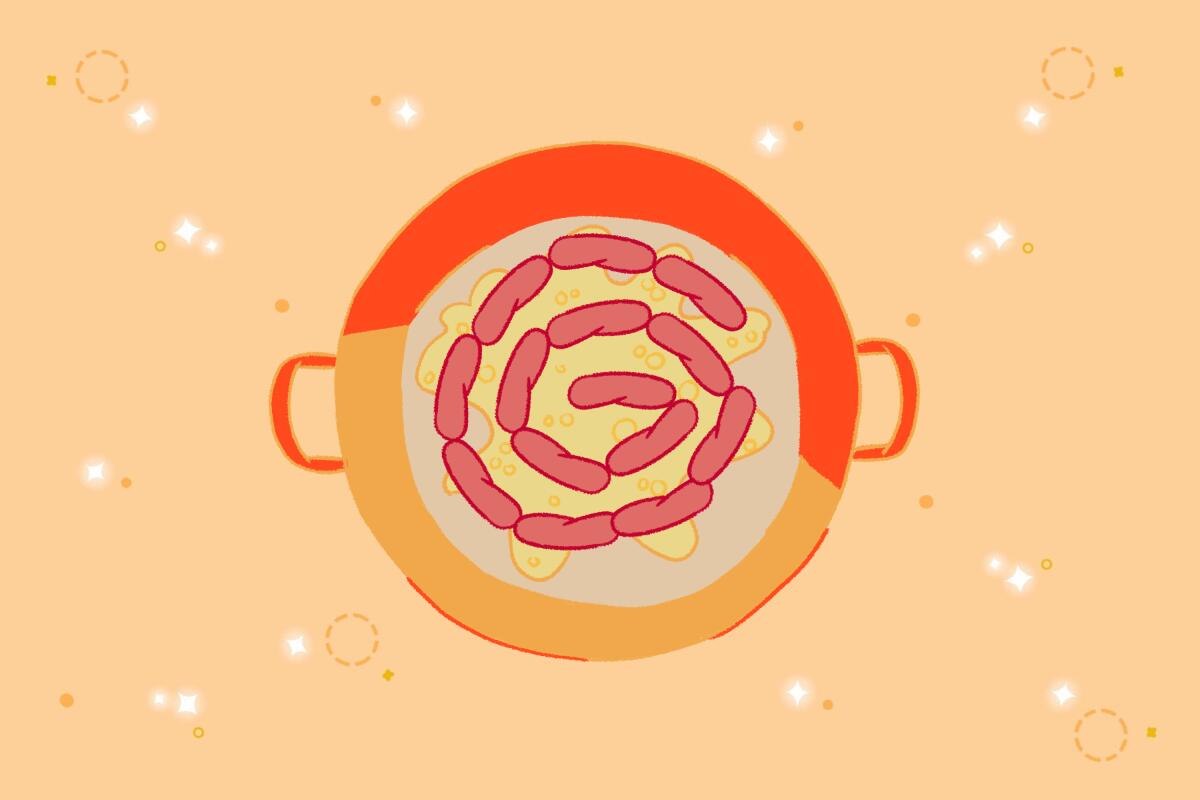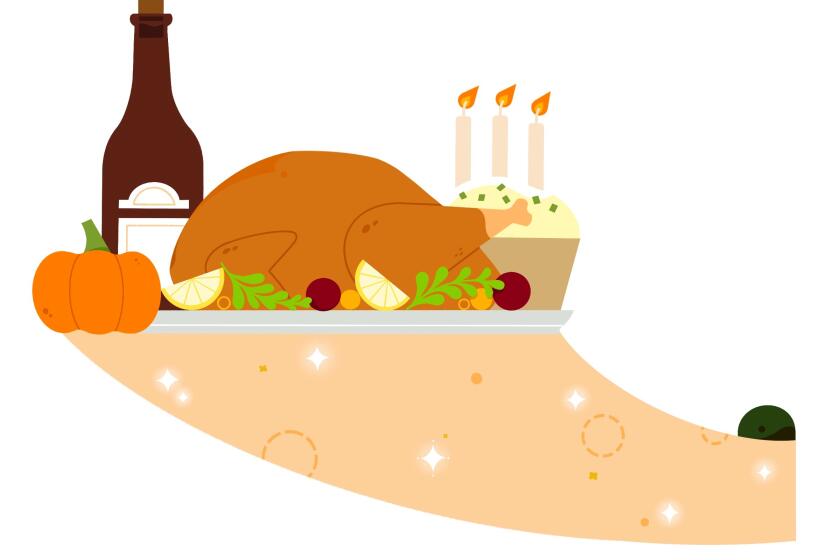Turkey bone gumbo is the answer for Thanksgiving leftovers (or the feast itself)

- Share via
“Turkey bone gumbo is not a specialty of Louisiana as much as it is a given there,” Sara Roahen wrote in “Gumbo Tales: Finding My Place at the New Orleans Table.” Her book, published in 2008, is a masterful hybrid of genres: a case study of Louisiana’s matchless food culture, a memoir of her near-decade living in New Orleans and an elegy for what Hurricane Katrina destroyed in 2005.
It also underscored one of the all-time great options for Thanksgiving leftovers. Roahen and her editors wrestled over whether to include recipes in the book. They ultimately decided against it, but when it was published, Roahen put a note on her website inviting anyone who’d purchased the book to send her a picture of the receipt; in turn, she’d email them a recipe for turkey bone gumbo, a dish that helped her feel connected to New Orleans when she was forced to leave post-Katrina.
Turkey Bone Gumbo
The recipe begins by simmering the turkey carcass with aromatics for stock and collecting the meat cast loose from the bones. Roahen suggests cooking the roux to a dark-chocolate brown; she adds andouille and filé, the powder made from sassafras leaves, both of which she orders from Jacob’s, a Louisiana sausage purveyor nearing a century in business.
Roahen and her family prefer the gumbo served over potato salad, a time-honored substitute for (or complement to) rice in New Orleans.
The recipe is born of practicality: In Louisiana, one has turkey on hand and one makes gumbo. Roahen’s version was informed by oral history interviews she conducted on behalf of the Southern Foodways Alliance. “Gumbo” means “okra” in a dialect spoken by enslaved West Africans who landed at Louisiana ports; the dish is a living, inextricable piece of the state’s past and present. Beyond some basic binaries — seafood or no-seafood, okra or no okra — the gumbo lexicon varies and evolves endlessly.
The greatest triumph of the season arrives on the day after Thanksgiving, when your protein-induced drowsiness has dissipated and the leftovers are yours to play with in the manner you desire.
Roahen currently lives in San Luis Obispo with her husband and son, but she’s still percolating on the subject of gumbo and reaching out to experts at the source for instruction. She particularly credits Frank Brigtsen, the chef and owner of Brigtsen’s Restaurant in New Orleans. “I have called Chef Frank, messaged him over Facebook and cornered him in his restaurant for gumbo advice many times over the years,” she says.
In the dozen years since Roahen first put her turkey bone gumbo recipe into the world, the method has continued to change, most notably in regards to the roux. Its dark color, teetering on the smoky edge of burnt, is critical to a gumbo’s depth of flavor. She now bakes the roux in the oven. “It allows you to monitor the color in a state that isn’t panic,” says Roahen. “If you take it out too soon and it’s too light, you can put it back in. Conversely, it’s much harder to burn a roux in the oven.” The technique also means less time at the stove, and it’s easier to pour off any extra oil from the roux.
Making gumbo can be a steady, calming kitchen meditation on the day after the feast — and in 2020, when every norm has been shattered, it’s excellent as the feast itself. This year, when Roahen spends Thanksgiving camping outside of San Diego, she’ll reheat the pot of turkey bone gumbo she’s made ahead of time as the day’s centerpiece. She already knows how powerfully the dish sustains amid catastrophe.
More to Read
Eat your way across L.A.
Get our weekly Tasting Notes newsletter for reviews, news and more.
You may occasionally receive promotional content from the Los Angeles Times.










